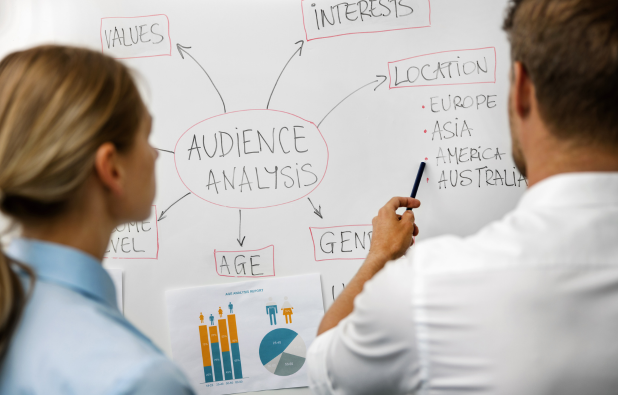What is the Inbound Marketing Funnel
The inbound marketing funnel breaks the process of inbound marketing into simple steps. It guides strangers into becoming loyal customers by sharing...
4 min read
Inbound 281
May 22, 2024 9:08:00 AM EDT

Understanding how your customers move through the marketing funnel is vital to refining your strategy and boosting conversions. A marketing funnel report provides valuable insights into these journeys, highlighting where you can make improvements. Not sure where to start? This short article will cover everything you need to create an effective marketing funnel report.
A marketing funnel report is like a map of your customer's journey. It shows how potential customers move from initial awareness of a problem to making a purchase to alleviate it. A funnel report helps companies discover where they lose prospects and what stages and strategies need tweaking. Visualizing each step in a funnel lets you pinpoint bottlenecks and streamline your efforts for better results.
You need to track several key metrics to gain a comprehensive understanding. These metrics include:
Conversion Rates: Measure the percentage of visitors who complete a desired action.
Click-Through Rates (CTR): See how often people click on your ads or links.
Bounce Rates: Track the percentage of visitors who leave after viewing just one page.
Customer Acquisition Cost (CAC): Calculate how much it costs to convert a visitor into a customer.
These metrics provide valuable data for making informed decisions and optimizing marketing efforts.
Let's explore the three steps you can take to create a marketing funnel report for your own business.
The awareness stage is the top of the funnel, where potential customers first become aware of your brand, product, or service. At this stage, you aim to reach as many people as possible and introduce them to your offerings. Key activities and channels in this stage include:
Advertising: Online ads (Google Ads, social media ads), print ads, TV and radio spots.
Content Marketing: Blog posts, videos, infographics, and other content that educates and informs.
Social Media: Organic posts, influencer collaborations, and paid social campaigns to increase visibility.
Public Relations: Press releases, media coverage, and events to generate buzz and awareness.
Key Metrics to Track:
Impressions: Number of times your ads or content are displayed.
Reach: Number of unique people who see your ads or content.
Website Traffic: Number of visitors to your website.
Social Media Engagement: Likes, shares, comments, and followers.
Once potential customers are aware of your brand, the next stage is to capture their interest. This is where they start to engage more deeply with your content and explore what you have to offer. The goal here is to nurture their interest and keep them engaged. Key activities and channels in this stage include:
Email Marketing: Newsletters, promotional emails, and personalized follow-ups.
Webinars and Live Events: Online webinars, live Q&A sessions, and product demonstrations.
Educational Content: Ebooks, whitepapers, case studies, and how-to guides that provide value.
Retargeting Campaigns: Ads targeting people who have previously visited your website or engaged with your content.
Key Metrics to Track:
Page Views: Number of views on specific web pages.
Time on Site: Average time visitors spend on your website.
Bounce Rate: Percentage of visitors who leave your site after viewing only one page.
Email Open and Click-Through Rates: Engagement with your email campaigns.
At the decision stage, potential customers evaluate your product or service and compare it to other options. They are gathering information and assessing whether your offering meets their needs. The goal is to provide all the necessary information and incentives to help them make a favorable decision. Key activities and channels in this stage include:
Product Pages: Detailed descriptions, specifications, and high-quality images or videos.
Customer Reviews and Testimonials: Social proof to build trust and credibility.
Comparisons and Demos: Side-by-side comparisons with competitors and product demos.
Discounts and Offers: Special promotions, discounts, and limited-time offers to encourage purchase.
Key Metrics to Track:
Product Page Views: Number of views on product-specific pages.
Add-to-Cart Rate: Percentage of visitors who add products to their cart.
Demo Requests: Number of requests for product demos or trials.
Engagement with Reviews and Testimonials: Interaction with customer reviews and testimonials.
To get accurate insights, you need data from various sources. Integrate your CRM, website analytics, and marketing automation tools. This will give you a comprehensive view of your customer's journey and help you gather detailed data for each funnel stage.
Once you have your data, it's time to dig in. Look for trends and patterns to understand what's working and what's not. Are there stages where customers are dropping off? Use this information to identify areas for improvement and optimize your marketing strategy.
Now that you have insights let's put them to good use. Improve conversion rates by:
A/B Testing: Test different versions of your content to see what works best.
Personalized Content: Tailor your messages to different customer segments.
Targeted Campaigns: Focus your efforts on high-potential customers.
These strategies help you refine your approach and increase conversions.
Effective marketing isn't just about tactics; it's also about budget. Use your funnel report to analyze the ROI of each stage. Allocate your budget to the stages with the highest return. This data-driven approach ensures you spend money where it will have the most impact.
Creating a marketing funnel report might seem daunting initially, but it's a crucial tool for any marketer. By tracking and analyzing customer interactions at each stage, you can optimize your strategy and drive growth. So, grab your data sources, define your funnel stages, and start making those reports.
Creating a detailed and effective marketing funnel report can be a complex task, but you don't have to navigate it alone. At Inbound 281, we specialize in helping businesses like yours develop comprehensive marketing strategies that drive results. Our team of experts can assist you in every step of the process, from defining your funnel stages to integrating data from various sources and analyzing the results.
Contact us on our website or call us at (800) 834-4910 to get started.

The inbound marketing funnel breaks the process of inbound marketing into simple steps. It guides strangers into becoming loyal customers by sharing...

As marketers, we all know the importance of marketing to the right audience, but what is segmentation targeting and positioning in a marketing plan,...

An effective email marketing campaign strategy can be a game-changer for businesses looking to connect directly with their audience. With the right...